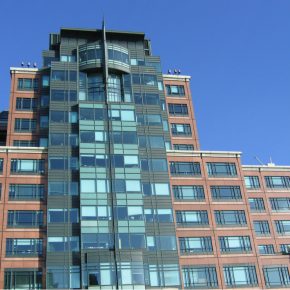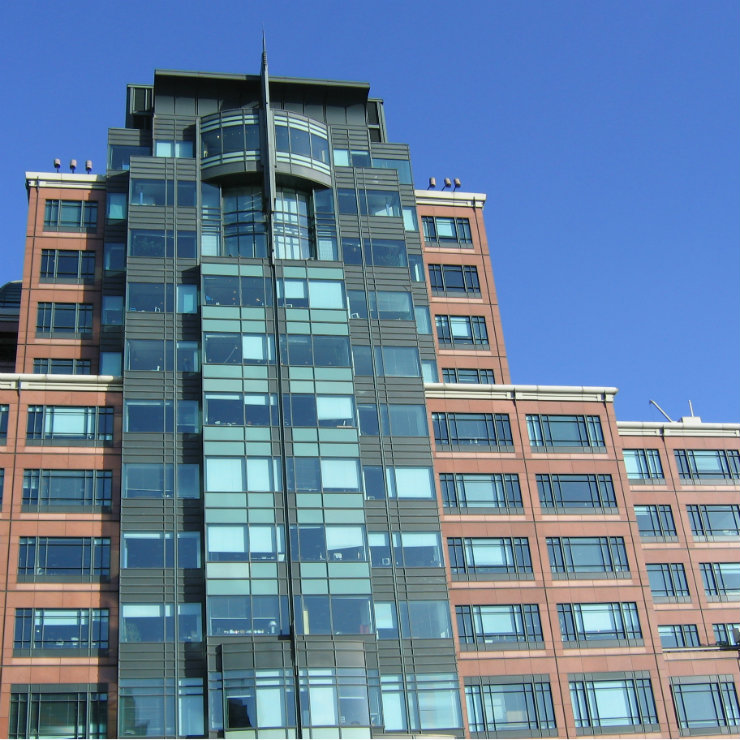
EBRD HQ, London, UK (EBRD, Public domain)
Each of the countries of the Western Balkans is too small to be attractive to big investors, but when it acts as a region with all its capacities, big and serious investors may be interested. Based on previous discussions the political decisionmakers insist on the further development of infrastructure, road infrastructure above all, energy infrastructure and, of course, the digital infrastructure. EBRD has already invested EUR12bn in the Western Balkans since the early 1990s and only last year it invested EUR1bn through 67 projects.
In a forecast presented at the meeting, EBRD lists Montenegro and Serbia as the fastest growing economies in the region in 2018, and adds that both countries are characterized by a strong inflow of investment. Other countries in the region also recorded significant growth, and Northern Macedonia recovered from a serious slowdown. Speaking about the prospects of the region, EBRD chief economist, Peter Tabak said that further reforms and strengthening of investments are necessary for achieving such growth that would lead to a long-term increase of income level and getting closer to the EU level. „Stronger regional integration, in part and through the removal of remaining customs and non-tariff barriers, would create new opportunities for growth, both for domestic firms and for foreign investors,” Mr. Tabak added.
According to forecasts, Albania will achieve a 3.9 per cent growth in 2019 and 2020, slightly less than 4.1 per cent, as it did in 2018. This points to investment risks, which are linked to a slowdown in the Eurozone economy, the main partner of Albania. Internal risks relate to the high level of public debt and the political crisis in Albania.
In Bosnia and Herzegovina (BiH), the economy continued to resist the slowdown in reforms and political uncertainties. GDP growth was 3.1 per cent in 2018. Economic growth is expected to grow by 3 per cent in 2019 and 2020. However, the 2019 forecast was reduced by 0.5 percentage points compared to November 2018 report, due to delays in the formation of a new governments after the 2018 elections, and delays in the IMF program. EBRD signed a contract with Bosnian government for a EUR210m loan for the construction of the highway near Doboj. Linking BiH with the region and EU markets through the improvement of infrastructure, but also supporting the change of European standards and regulations is a priority for this country, but also for the EBRD and its partners, the European Commission (EC) and the European Investment Bank (EIB). Greenfield investments require new policies that need to focus considerably on Bosnian resources, their opportunities and the image that the country has as a good destination for FDI. This is supported by the fact that progress in the EBRD’s pioneering program in financing green cities, aimed at reducing pollution and supporting the ecologically responsible economy, exceeded expectations. Leading economists at EBRD say that at the end of last year, an additional EUR700m was granted to cities working to improve ecological efficiency. The political gap in BiH, however, greatly distorts economic development.
In 2018, in Kosovo the relatively strong economic growth continued for the fourth year in a row. After a growth of 3.7 per cent in 2017, GDP grew by 3.9 per cent in 2018 thanks to investment and consumption. Growth is expected to remain at 4 per cent in 2019 and 2020, and domestic demand remains the main driver of growth.
After a serious slowdown in 2017, the economy of Northern Macedonia grew by 2.7 per cent in 2018, thanks to a strong growth in exports and recovery in the private and public consumption. A mild increase in growth to 3 per cent in 2019 is expected due to the recovery in the investment, as well as the continuation of the same dynamics in 2020.
Growth in Serbia rose to 4.3 per cent in 2018, after just 2 per cent in 2017, as a result of a continuing recovery in domestic demand and strong exports. Growth is expected to slow to 3.5 per cent in 2019, followed by a slight increase to 3.8 per cent in 2020, with private consumption, investment and exports as the main drivers of growth, while the opposite effect will have an increase of imports.
The EBRD expects a significantly lower growth of the Montenegrin economy in this and next year, due to the completion of major investment projects and ongoing fiscal consolidation. It notes that the growth of Montenegrin GDP, which was surprising in 2018, will significantly decrease to 2.8 per cent in 2019 and 2.6 per cent in 2020. „Montenegro’s growth in 2018 was surprising. The economy has grown by almost 5 per cent due to the construction of a highway, some of the leading projects on the coast, an extremely strong tourist season and further growth of private consumption. Intensive investment activity and consequently higher imports led to an increase in the current account deficit to over 17 per cent of GDP. Net foreign direct investment fell to 7 per cent of GDP (11 per cent in 2017), partly because the government bought EPCG shares,” the EBRD writes. It was estimated that the gradual, fiscal consolidation began to yield results, and in the past year the budget deficit was reduced to 3.5 per cent of GDP (5.5 per cent was in 2017). The EBRD points out that potential liabilities and spending overruns can endanger the results so far, and that the unemployment rate has decreased by one percentage point in 2018, but it has remained high at 15 per cent, especially among young people. „With the completion of major investment projects and ongoing fiscal consolidation, growth is expected to decline significantly, to 2.8 per cent in 2019 and 2.6 per cent in 2020. Projections risks mainly relate to weaker growth in the EU, possibly further exceeding the cost of building a highway and domestic political uncertainty. In addition to improving public finance management, growth risks could be mitigated by labor market reform, public administration and the strengthening of economic institutions,” the EBRD concludes.
President of the EBRD, Suma Chakrabarti announced in Sarajevo that the bank will increase its investments this year in all the regions in which it operates, but will pay special attention to the Western Balkans, where reform assistance needs to be maximized as to prepare these countries for the membership in the European Union. „This year, an investment of more than EUR10bn is planned, and the goal is to make these investments good,” said the EBRD President. In 2018, the bank placed up to now a record EUR9.5bn of investment through 400 projects on three continents. Of this, EUR1.1bn has been invested in the countries of the Western Balkans.
„The EBRD is a strong promoter and friend of the Western Balkans. The region has important in terms of resources and other potentials as a bridge between Europe and Asia and the Middle East,” Mr. Chakrabarti said. He added that it is clear that the region is on the path to EU membership, but that it is necessary to meet the EU standards, and one of them is certainly macroeconomic stability. He urged the Western Balkan countries to look beyond their borders because they are isolated and uninteresting for large investments, while the region as a whole has a much greater potential.
„We see integration as a very powerful instrument for increasing trade in goods and services, increasing cross-border investment and, most importantly, encouraging the exchange of new ideas and innovations,” Mr. Chakrabarti said. He reiterated the EBRD’s view that improving infrastructure, primarily roads, railways, ports, airports and telecommunications, is crucial for interconnection. At the same time, the region can also be integrated through investments, which is a significant tool in the fight against the emigration of the population.
Reforms that need to be implemented are difficult, but beneficial, Mr. Chakrabarti noted, and illustrated the fact that in BiH this year, the EBRD will invest EUR400m, twice as much as in 2018, because reforms are being implemented. He also said that politicians still remain the burden of implementing reforms, adding that the best example of how to do this is Northern Macedonia.
Vedran Obućina is an analyst and a journalist specializing in the Croatian and Middle East domestic and foreign affairs. He is the Secretary of the Society for Mediterranean Studies at the University of Rijeka and a Foreign Affairs Analyst at The Atlantic Post.

